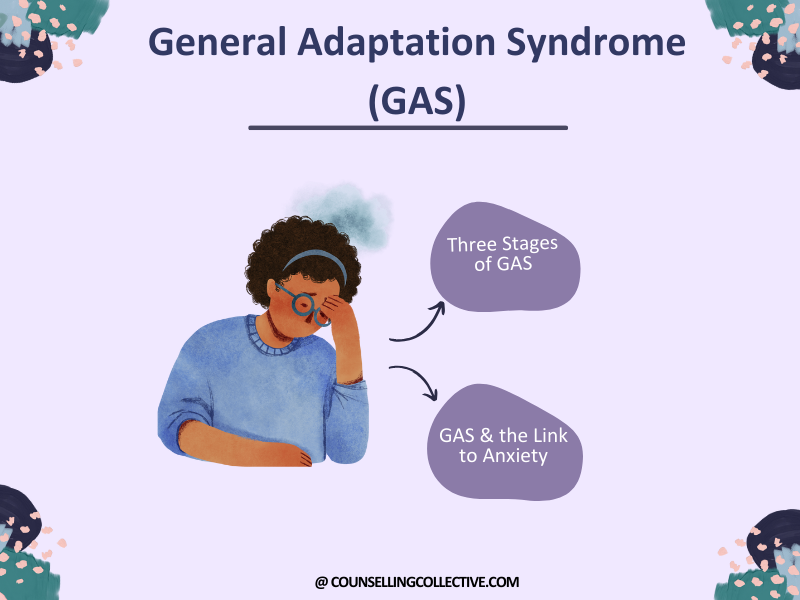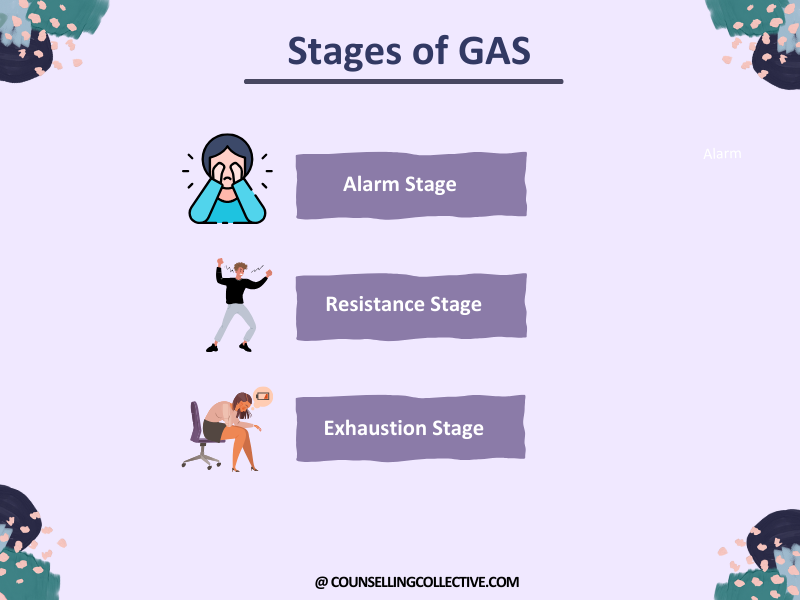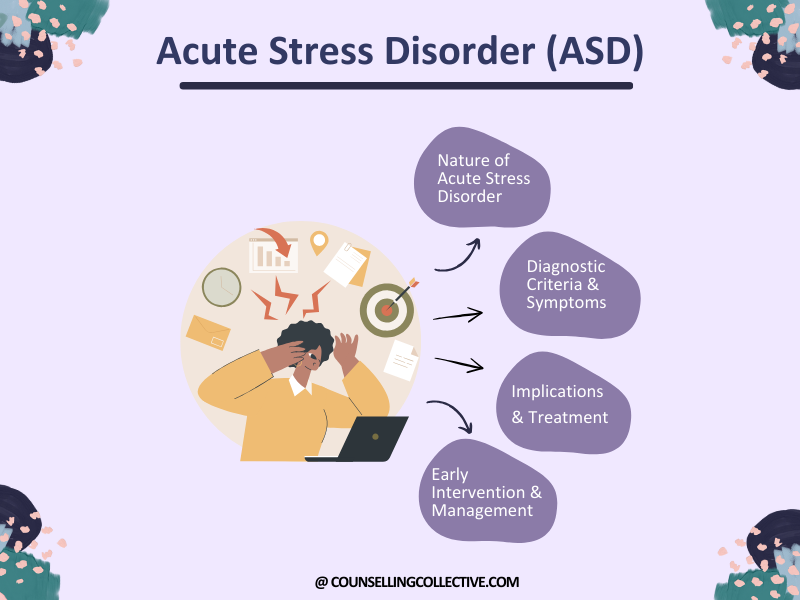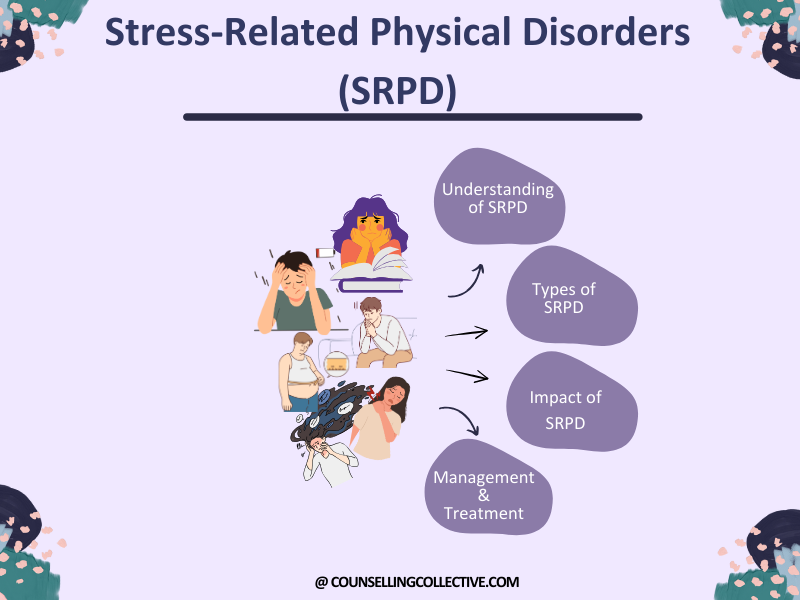Contents
Introduction
In the fast-paced and demanding world we live in, it’s no surprise that anxiety and stress have become prevalent challenges affecting millions of people. Anxiety, often described as a feeling of unease or worry, and stress, the body’s response to overwhelming demands, are natural reactions to life’s pressures. However, when these reactions become chronic and unmanageable, they can give rise to a range of anxiety and stress-related disorders that significantly impact an individual’s well-being.
Defining Anxiety and Stress
Anxiety is a complex emotional state characterized by excessive apprehension and fear.
Stress, on the other hand, is the body’s physiological and psychological response to demands that require adaptation.
It’s a normal response to situations that pose a threat, whether real or perceived. While a certain level of anxiety can be adaptive and even beneficial – alerting us to potential dangers and preparing us to respond – excessive or persistent anxiety can interfere with daily life and functioning.

It’s a natural survival mechanism that triggers the “fight or flight” response when faced with a challenge. This response involves the release of stress hormones like cortisol and adrenaline, which prepare the body to respond to the perceived threat.
While stress can be motivating and help us perform under pressure, chronic stress can have detrimental effects on physical and mental health.
The Significance of Understanding Anxiety and Stress
Understanding anxiety and stress-related disorders is of paramount importance in today’s society. These disorders not only affect an individual’s mental and emotional well-being but can also have profound effects on physical health.
Prolonged exposure to stress and anxiety can be dangerous. Such as:
- Weaken the immune system
- Increase the risk of cardiovascular problems
- Contribute to a host of other health issues.
- Bad impact on relationships.
- Poor work performance
- Social withdrawal
- Hinder personal growth
- Trigger or exacerbate other mental health conditions.[1]
Navigating Through the Article
In this comprehensive article, we’ll search into the diverse landscape of anxiety and stress-related disorders, covering a range of conditions such as:
- Generalized Anxiety Disorder (GAD)
- Panic Disorder, Social Anxiety Disorder
- Specific Phobias
- Obsessive-Compulsive Disorder (OCD)
- Post-Traumatic Stress Disorder (PTSD).
Additionally, we’ll introduce the concept of General Adaptation Syndrome (GAS) to elucidate how the body responds to stress.
Moving beyond these disorders, we’ll examine Acute Stress Disorder (ASD) and its early intervention strategies, search into the complexities of adjustment disorders, and shed light on the debilitating nature of PTSD, as well as the intricate link between stress and physical health.
Our article will also explore Burnout Syndrome, a consequence of chronic workplace stress, and its implications for mental and physical well-being.
We’ll underscore the importance of seeking professional assistance and adopting effective coping strategies to manage and mitigate the impact of these disorders, aiming to empower readers with the knowledge and tools needed for a healthier, more balanced life.
Throughout the article, there’s a strong emphasis on the importance of seeking professional help and adopting effective coping strategies to manage and reduce the impact of these disorders. By exploring these dimensions, we aim to equip readers with the knowledge and tools to lead healthier and more balanced lives.
In the sections that follow, we will search into the theoretical foundations of anxiety and stress-related disorders, explore the benefits of self-awareness, examine factors that influence these conditions, and provide practical techniques for managing and reducing their impact.
Let’s embark on this enlightening journey of unraveling the complexities of anxiety and stress-related disorders, empowering ourselves with knowledge to pave the way for a healthier and more resilient future.
Understanding Anxiety
Anxiety is an intricate and multifaceted emotional response that can manifest in various forms and intensities. While it’s a normal reaction to certain situations, chronic or excessive anxiety can evolve into a debilitating disorder.
Understanding the nuances of anxiety is crucial for identifying the signs, seeking appropriate help, and adopting effective coping strategies.
The Spectrum of Anxiety
Anxiety exists along a spectrum, ranging from mild unease to overwhelming distress. At its core, anxiety involves:
- A heightened state of alertness.
- Often accompanied by physiological changes like increased heart rate.
- Shallow breathing.
- Muscle tension.

These responses prepare the body to face potential threats, whether real or perceived.
Types of Anxiety Disorders
Within the realm of anxiety and stress-related disorders, several distinct types of anxiety disorders are recognized:
| Anxiety Disorder | Key Characteristics |
| Generalized Anxiety Disorder (GAD) | Persistent excessive worry, restlessness, fatigue, difficulty concentrating, irritability, muscle tension, and sleep disturbances. |
| Panic Disorder | Sudden and recurring panic attacks with rapid heartbeat, shortness of breath, trembling, and a sense of impending doom. |
| Social Anxiety Disorder | Intense, irrational fear of a specific object or situation (e.g., heights, spiders, flying) triggers extreme anxiety and panic. |
| Specific Phobias | Intense, irrational fear of a specific object or situation (e.g., heights, spiders, flying) triggering extreme anxiety and panic. |
| Obsessive-Compulsive Disorder (OCD) | Intrusive distressing thoughts (obsessions) and repetitive behaviors or mental acts (compulsions) to relieve anxiety caused by obsessions. |
| Post-Traumatic Stress Disorder (PTSD) | Develops after exposure to a traumatic event, leading to intrusive memories, nightmares, hypervigilance, and avoidance of trauma reminders. |
Each type of anxiety disorder has its unique features and triggers, but all share a common thread of disrupting normal functioning and causing significant distress.[2]
The Underlying Mechanisms
The underlying mechanisms of anxiety are complex and involve a combination of genetic, neurobiological, environmental, and psychological factors.
Neurotransmitters like serotonin and norepinephrine play a role in regulating mood and anxiety. Genetic predispositions and life experiences, such as trauma or chronic stress, can contribute to the development of anxiety disorders.
Seeking Professional Help
Understanding anxiety goes hand in hand with recognizing when it becomes a disorder that requires professional intervention.
- Consulting a Mental Health Professional: Psychologists or psychiatrists can provide accurate diagnoses and tailored treatment.
- Treatability of Anxiety Disorders: It’s essential to understand that anxiety disorders are treatable conditions.
- Timely Intervention: Early intervention can significantly improve the overall quality of life.
- Comprehensive Understanding: Gaining a comprehensive understanding of these disorders empowers individuals to make informed decisions and adopt effective management strategies.
In our journey, we will search deeper into each disorder, examining its unique characteristics, diagnostic criteria, and treatment approaches.
General Adaptation Syndrome (GAS)

Amid the intricate web of anxiety and stress-related disorders lies an intriguing concept known as the General Adaptation Syndrome (GAS).
Coined by Hans Selye, a pioneering endocrinologist, GAS provides valuable insights into how our bodies respond to stressors, including the emotional and physiological facets of anxiety.
In this section we will learn about :
- The Three Stages of GAS
- GAS and the Link to Anxiety
The Three Stages of GAS
GAS outlines a three-stage response pattern that the body undergoes when confronted with stressors:
- Alarm Stage: In this initial phase, the body’s fight-or-flight response is activated. It’s a primal reaction designed to prepare us to confront or flee from the stressor.
During this stage, the body releases stress hormones like adrenaline and cortisol, leading to increased heart rate, heightened alertness, and energy mobilization.
- Resistance Stage: If the stressor persists, the body enters the resistance stage. Here, the body attempts to adapt and cope with the ongoing stressor. Hormone levels stabilize, and the body’s defense strives to maintain equilibrium.

However, this stage consumes considerable energy and can lead to symptoms of anxiety, irritability, and decreased immunity.
- Exhaustion Stage: Prolonged exposure to stressors can lead to the exhaustion stage. The body’s resources become depleted, and its ability to cope declines. Physical and emotional symptoms intensify, and individuals may experience burnout, a compromised immune system, and increased vulnerability to various health issues.
GAS and the Link to Anxiety
GAS offers a framework for understanding how chronic stress can contribute to the development and exacerbation of anxiety and stress-related disorders.
The prolonged activation of the body’s stress response system can lead to imbalances in:
- Neurotransmitters and hormones
- Influencing mood regulation
- Cognitive functioning
- Emotional well-being.
Interaction with Anxiety Disorders
Each type of anxiety disorder interacts uniquely with the stages of GAS. For instance:
- Generalized Anxiety Disorder (GAD): GAD often leads to prolonged activation of the resistance stage in GAS.This results in persistent worry, physical tension, and cognitive hyperarousal.
- Panic Disorder: Panic attacks associated with this disorder can trigger the alarm stage of GAS. This leads to a release of stress hormones and the characteristic symptoms of panic, such as rapid heartbeat and shortness of breath.
- Social Anxiety Disorder: Anticipation of social situations in individuals with social anxiety can activate the alarm stage of GAS. This activation manifests as heightened self-consciousness and physical symptoms like blushing and trembling.
- Obsessive-Compulsive Disorder (OCD): The distress caused by obsessions and the compulsive behaviors performed to alleviate them can activate the resistance stage within GAS. This perpetuates the cycle of anxiety associated with OCD.[3]
Acute Stress Disorder (ASD)
Within the realm of anxiety and stress-related disorders, Acute Stress Disorder (ASD) occupies a significant place, characterized by its immediate onset following a traumatic event.
While ASD and Post-Traumatic Stress Disorder (PTSD) share similarities, ASD is distinguished by its timeframe, offering valuable insights into the initial response to trauma.
In this section we will learn about :
- The Nature of Acute Stress Disorder
- Diagnostic Criteria and Symptoms
- Implications and Treatment
- Early Intervention and Management

The Nature of Acute Stress Disorder
ASD manifests within three days to four weeks after exposure to a traumatic event and can persist for a duration ranging from three days to four weeks. It serves as a crucial diagnostic precursor for PTSD, as its occurrence predicts the potential development of more persistent and enduring psychological symptoms.
Diagnostic Criteria and Symptoms
| Category | Symptoms |
| Intrusive Thoughts | Recurrent distressing memories of the traumatic event – Vivid nightmares – Flashbacks – Psychological and physiological distress when exposed to trauma reminders |
| Negative Mood | Persistent negative emotions – Anhedonia (inability to experience pleasure) – Feelings of detachment or estrangement from others |
| Dissociation | Sense of detachment from oneself or surroundings – Reduced awareness of surroundings – Derealization (feeling that the world is unreal) – Depersonalization (feeling detached from oneself) |
| Avoidance | Efforts to avoid reminders, thoughts, feelings, or conversations related to the traumatic event |
| Arousal | Irritability – Difficulty concentrating – Sleep disturbances – Exaggerated startle responses – Hypervigilance |
Implications and Treatment
The presence of ASD can significantly impact an individual’s daily functioning, relationships, and overall well-being. While ASD symptoms may decrease over time for some individuals, a significant proportion may go on to develop PTSD if left untreated.
Early Intervention and Management
Early intervention is crucial in mitigating the long-term effects of ASD and reducing the risk of developing PTSD. Cognitive-behavioral Therapy (CBT), particularly trauma-focused CBT, has demonstrated efficacy in treating ASD.
Exposure therapy, cognitive restructuring, and stress management techniques are commonly employed within this therapeutic framework.[4]
Adjustment Disorders
While life often presents us with challenges and changes, Adjustment Disorders (AD) shed light on the unique psychological responses that can arise when individuals struggle to cope with significant life events.
Unlike other stress-related disorders, Adjustment Disorders are characterized by a direct link between the onset of symptoms and specific stressors or life changes.
In this section, we will explore these factors:
- Understanding Adjustment Disorders
- Diagnostic Criteria and Symptoms
- Subtypes of Adjustment Disorders
- Therapeutic Approaches

Understanding Adjustment Disorders
Adjustment Disorders encompass a range of emotional and behavioral symptoms that manifest within three months of experiencing a stressor. These stressors can include:
- The loss of a loved one
- Relationship issues
- Financial hardships
- Academic pressures and more.
AD serves as a reminder that individuals possess varying levels of resilience when confronted with life’s trials.
Diagnostic Criteria and Symptoms
The DSM-5 outlines the diagnostic criteria for Adjustment Disorders, emphasizing that the emotional or behavioural symptoms exhibited are in excess of what would be expected in response to the stressor. The symptoms can show in two types:
| Emotional | Behavioral |
| feelings of hopelessness | Social withdrawal |
| Sadness | Reckless behavior |
| Anxiety | Aggression. |
Subtypes of Adjustment Disorders
Adjustment Disorders can be further classified into several subtypes, each reflecting specific symptom patterns in response to stressors:
1. Adjustment Disorder with Depressed Mood
Characteristics:
Pervasive feelings of sadness
Tearfulness
Loss of interest or pleasure in activities
Implications for Treatment:
Focus on addressing depressive symptoms
Supportive therapy and possibly medication
2. Adjustment Disorder with Anxiety
Characteristics:
- Excessive worry
- Nervousness
- Apprehension
- Physical symptoms (restlessness, fatigue, muscle tension)
Implications for Treatment:
- Cognitive-behavioral therapy for anxiety management
- Relaxation techniques and stress reduction strategies
- Medication for anxiety symptoms if necessary
Adjustment Disorder with Mixed Anxiety and Depressed Mood
Characteristics:
- Symptoms of both depression and anxiety
- Highlighting the interplay between emotional states
Implications for Treatment:
- Integrated approach addressing both depression and anxiety
- Psychoeducation on managing stressors
- Supportive therapy and medication for symptom relief
4. Adjustment Disorder with Disturbance of Conduct
Characteristics:
- Behavioral changes, including defiance, rule disregard, and reckless behavior
Implications for Treatment:
- Behavioral therapy and counseling to address conduct issues
- Establishing boundaries and consequences
- Family therapy for addressing family dynamics
5. Adjustment Disorder with Mixed Disturbance of Emotions and Conduct
Characteristics:
- Combination of emotional and behavioral symptoms
- Encompassing elements of depression, anxiety, and conduct disturbances
Implications for Treatment:
- Comprehensive treatment addressing emotional and behavioral aspects
- Individualized treatment plan
- Collaboration with family and support network
Therapeutic Approaches
Counseling and psychotherapy play a central role in treating Adjustment Disorders. Psychoeducation, supportive therapy, cognitive-behavioral interventions, and stress management techniques are often employed to help individuals navigate the challenges posed by stressors.
By providing a safe space for exploration and expression, therapy assists in developing healthy coping strategies and facilitating the adjustment process.[5]
Post-Traumatic Stress Disorder (PTSD)
PTSD is like a shadow from a past trauma that just won’t fade. It can bring on intense flashbacks, nightmares, and crippling anxiety, making everyday life a challenge. But with the right help and support, many people find ways to cope and move towards healing.
In this section, we will discover about:
- Understanding Post-Traumatic Stress Disorder
- Diagnostic Criteria and Symptoms
- Subtypes of PTSD
- Impact and Treatment
- Therapeutic Approaches

Understanding Post-Traumatic Stress Disorder
Post-Traumatic Stress Disorder (PTSD) is a complex psychological condition that can develop in individuals who have experienced or witnessed traumatic events.
While it’s natural to feel distress after such events, PTSD represents a prolonged and often debilitating response that can significantly affect an individual’s daily life.[2]
Diagnostic Criteria and Symptoms
The diagnostic criteria for PTSD, as outlined in the DSM-5, highlight four main symptom clusters:
- Re-Experiencing Symptoms: This cluster includes intrusive memories, flashbacks, nightmares, and intense emotional or physiological reactions triggered by reminders of the traumatic event.
- Avoidance Symptoms: Individuals with PTSD may avoid situations, places, people, or activities that remind them of the trauma. This avoidance can extend to conversations or thoughts about the traumatic event.
- Negative Changes in Cognition and Mood: This cluster involves persistent negative beliefs about oneself or the world, distorted blame, feelings of detachment, and a diminished range of positive emotions.
- Arousal and Reactivity Symptoms: Hyperarousal, irritability, difficulty sleeping, hypervigilance, and exaggerated startle response are characteristic of this cluster.
Subtypes of PTSD
PTSD can manifest in different ways based on the nature of the traumatic event and the individual’s response:
- Acute Stress Disorder (ASD): When symptoms of PTSD occur within three days to four weeks after the trauma, it may be diagnosed as ASD. If symptoms persist beyond this period, the diagnosis may change to PTSD.
- Complex PTSD: Individuals who have experienced prolonged or repeated trauma, such as in cases of ongoing abuse or captivity, may develop Complex PTSD.
This subtype is characterized by additional symptoms, including disturbances in self-concept, interpersonal relationships, and emotional regulation.
Impact and Treatment
PTSD can have a profound impact on an individual’s mental, emotional, and physical well-being. Relationships, work, and overall quality of life can be compromised.
However, the disorder is treatable, and various therapeutic approaches have proven effective in helping individuals regain control and move toward recovery.
Therapeutic Approaches
- Cognitive-behavioral Therapy (CBT): This evidence-based approach aims to modify negative thought patterns and behaviors associated with PTSD. Prolonged Exposure Therapy and Cognitive Processing Therapy are specific CBT techniques used for treating PTSD.
- Eye Movement Desensitization and Reprocessing (EMDR): EMDR combines exposure therapy with guided eye movements or other forms of rhythmic left-right stimulation to help individuals process traumatic memories.
- Medication: Antidepressant and anti-anxiety medications are sometimes prescribed to alleviate PTSD symptoms, particularly in conjunction with psychotherapy.[6]
Stress-Related Physical Disorders
Stress can do more than just mess with your mood; it can wreak havoc on your body too. Things like headaches, stomachaches and even heart problems can be triggered or worsened by chronic stress. Taking steps to manage stress isn’t just good for your mind, it’s a gift to your body too.
In this section, we will learn about:
- Understanding Stress-Related Physical Disorders
- Types of Stress-Related Physical Disorders
- Impact of Stress-Related Physical Disorders
- Management and Treatment

Understanding Stress-Related Physical Disorders
Stress is not confined to affecting just our emotions; it can also take a toll on our physical well-being. Stress-related physical disorders highlight the intricate connection between mind and body, demonstrating how psychological stressors can manifest as tangible physical symptoms.
The Mind-Body Connection
Research has shown that chronic stress can contribute to or exacerbate a range of physical conditions.
The mind-body connection is a powerful phenomenon, where emotional distress can lead to physiological changes that impact various systems in the body.
Types of Stress-Related Physical Disorders
- Cardiovascular Disorders: Stress can contribute to high blood pressure, heart palpitations, and an increased risk of heart disease. The release of stress hormones can lead to the constriction of blood vessels and elevated heart rate.
- Gastrointestinal Disorders: Chronic stress may lead to gastrointestinal issues such as irritable bowel syndrome (IBS), indigestion, and even ulcers. The gut is highly sensitive to stress and can respond to inflammation and discomfort.
- Immune System Suppression: Prolonged stress weakens the immune system, making individuals more susceptible to infections and illnesses. It can also slow down wound healing and recovery.
- Musculoskeletal Disorders: Stress can lead to tension in muscles, contributing to headaches, backaches, and muscle pain. Conditions like tension headaches and temporomandibular joint disorder (TMJ) are often stress-related.
- Respiratory Disorders: Stress-induced changes in breathing patterns and chest tightness can exacerbate respiratory conditions such as asthma. Stress can also increase the risk of respiratory infections.
Impact of Stress-Related Physical Disorders
Stress-related physical disorders can significantly impact an individual’s quality of life. They can lead to persistent discomfort, reduced functioning, and an increased risk of developing more severe health conditions.
Furthermore, the interplay between psychological stress and physical symptoms can create a cycle where stress triggers physical symptoms, which in turn heighten stress levels.
Management and Treatment
Addressing stress-related physical disorders involves a holistic approach that targets both the mind and body. Effective strategies include:
- Stress Management Techniques: Learning stress-reduction techniques such as deep breathing, progressive muscle relaxation, and mindfulness can help alleviate both psychological and physical symptoms.
- Physical Activity: Regular exercise is a powerful tool for managing stress and promoting overall well-being. Exercise releases endorphins, which are natural mood elevators.
- Healthy Lifestyle Choices: A balanced diet, adequate sleep, and avoiding harmful habits such as smoking and excessive alcohol consumption contribute to better stress management.
- Mind-Body Practices: Practices like yoga, tai chi, and meditation integrate physical movement with mindfulness, promoting relaxation and stress reduction.[7]
Burnout Syndrome
Burnout is like hitting a wall of exhaustion and frustration, especially from overworking or feeling unappreciated. It can leave you emotionally drained, physically worn out, and fed up with your job or responsibilities. Finding ways to recharge and setting boundaries is key to bouncing back from burnout.
In this section, we will discover about:
- Understanding Burnout Syndrome
- Signs and Symptoms
- Causes of Burnout
- Prevention and Management

Understanding Burnout Syndrome
Burnout syndrome is a distinctive type of stress characterized by emotional exhaustion, feelings of cynicism and detachment from work, and a sense of reduced professional efficacy.
It is often experienced by individuals who are overwhelmed by chronic workplace stress and demands. Burnout not only affects the individual’s work life but can also spill over into personal life, leading to physical, emotional, and mental health challenges.
Signs and Symptoms
Burnout syndrome manifests through a combination of physical, emotional, and behavioral symptoms, which may include:
- Physical Exhaustion: Individuals with burnout often report feeling drained, fatigued, and lacking energy, even after a full night’s sleep.
- Emotional Detachment: A sense of emotional distance or cynicism towards work tasks and colleagues is a common sign of burnout.
- Reduced Performance: Burnout can lead to a decline in job performance, efficiency, and productivity.
- Cognitive Impairment: Concentration difficulties, forgetfulness, and reduced problem-solving abilities may result from burnout.
- Physical Symptoms: Headaches, stomach issues, and susceptibility to illnesses can be related to burnout.
Causes of Burnout
Burnout is often associated with prolonged exposure to high levels of chronic stress in the workplace. Factors contributing to burnout include:
- Excessive Workload: Overwhelming job demands and unrealistic expectations can lead to burnout.
- Lack of Control: Feeling powerless or lacking control over work-related decisions can contribute to burnout.
- Lack of Recognition: A lack of acknowledgment or appreciation for one’s efforts can erode motivation and contribute to burnout.
- Work-Life Imbalance: An inability to balance work with personal life can lead to burnout.
Prevention and Management
Addressing burnout requires a multi-faceted approach that combines individual and organizational efforts:
- Self-Care: Individuals can prioritize self-care by setting boundaries, taking breaks, engaging in hobbies, and seeking social support.
- Stress Management: Learning stress reduction techniques and effective time management skills can help mitigate burnout.
- Workplace Support: Organizations play a crucial role by promoting a supportive work environment, providing resources for managing stress, and recognizing employees’ contributions.
- Mindfulness and Relaxation: Practicing mindfulness, meditation, and relaxation exercises can help individuals manage stress and prevent burnout.
- Seeking Help: If burnout becomes overwhelming, seeking support from mental health professionals can provide valuable guidance and coping strategies.[8]
Conclusion
In our exploration of anxiety and stress-related disorders, we’ve searched into the complexities of these mental health challenges, their origins, and the various conditions they encompass. We began by understanding anxiety’s basics, its physical responses, and its importance.
We then explored specific anxiety disorders like generalized anxiety, panic disorder, and social anxiety. We discussed post-traumatic stress disorder (PTSD) and its profound effects following trauma exposure. Chronic stress’s impact on physical health highlighted the mind-body connection.
Adjustment disorders illustrate the difficulties of adapting to life changes and burnout syndrome emphasizes the importance of a supportive work environment and self-care.
Throughout, we learned about treatment options from therapy to mindfulness. Mental well-being isn’t linear but requires patience and a comprehensive approach.
However, fostering mental health awareness and well-being prioritization in society can lead to resilience and hope. Through research, education, and support, we can build a future where mental health is fundamental, enriching our lives.
Reference
- Barlow, D. H. (2008). Anxiety and Its Disorders: The Nature and Treatment of Anxiety and Panic (4th ed.). The Guilford Press. Amazon.
- American Psychiatric Association. (2013). Diagnostic and Statistical Manual of Mental Disorders (5th ed.). American Psychiatric Publishing. Amazon.
- Selye, H. (1936). A syndrome produced by diverse nocuous agents.Nature, 138(3479), 32.
- Bryant, R. A. (Ed.). (2008). Acute Stress Disorder: What It Is and How to Treat It. Guilford Press.
- First, M. B., Reed, G. M., Hyman, S. E., & Saxena, S. (2015). The development of the ICD-11 Clinical Descriptions and Diagnostic Guidelines for Mental and Behavioral Disorders. World Psychiatry, 14(1), 82-90.
- Foa, E. B., Keane, T. M., Friedman, M. J., & Cohen, J. A. (Eds.). (2009). Effective Treatments for PTSD: Practice Guidelines from the International Society for Traumatic Stress Studies (2nd ed.). Amazon.
- Sapolsky, R. M. (2004). Why Zebras Don’t Get Ulcers: The Acclaimed Guide to Stress, Stress-Related Diseases, and Coping (3rd ed.). Holt Paperbacks. Amazon
- Maslach, C., & Leiter, M. P. (2008). The Truth About Burnout: How Organizations Cause Personal Stress and What to Do About It. Jossey-Bass. Amazon.
